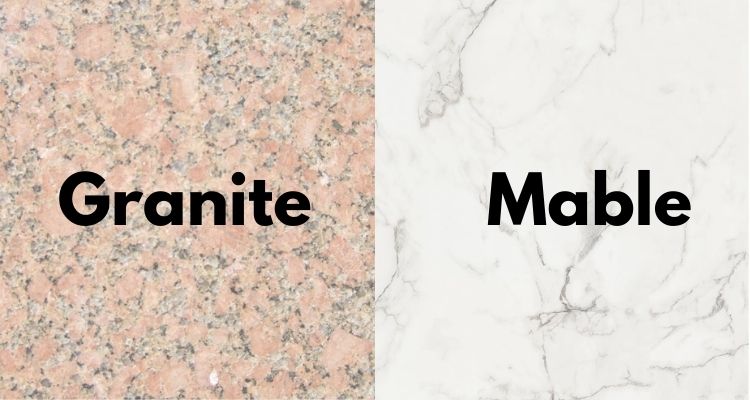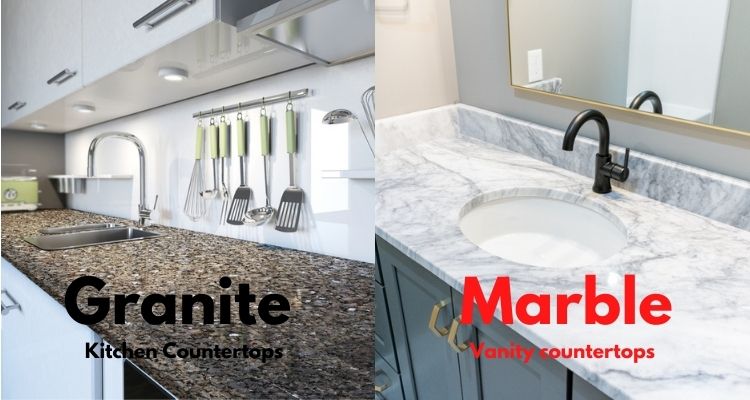
How To Tell The Difference Between Granite And Marble
- Posted by Ikenna N.
- On July 11, 2025
- 0 Comments
- Furniture, Kitchen, Natural Stone
Knowing the difference between granite and marble is a great advantage when picking out kitchen or vanity countertops. The back and forth in making a decision, the confusion, and the doubts; all make it an uphill task. If you find it difficult to make a decision on what countertop to select for your project, you can read these tips to guide you.
Asides from knowing why you have to make a choice between granite and marble, you also need to tell the difference apart. So many homeowners missed this final piece of the puzzle just because they couldn’t tell the difference apart.
Marble and granite are frequently used on kitchen and bathroom countertops. Some even use them for flooring purposes. Although naturally occurring, with today’s advancement in technology, It is difficult to spot the difference with the naked eye.
This article will tell you the characteristics and properties to look out for when telling the difference between granite and marble. Read further!
Table of Contents
Physical Attributes That Show The Difference Between Granite And Marble
Pattern/Composition

Granite
- Granite is a grainy, igneous rock that is composed of many different minerals. This makes it have a speckled pattern, due to many minerals fused together.
Marble
- Marble is a softer metamorphic rock that is predominantly made of calcite (calcium carbonate). This gives it a veiny pattern. Do you know how your veins look under your skin? That’s how they appear on marble.
Color/Fading
Granite
- A larger percentage of all granite slabs are dark-colored. Because of the method of its formation, there’s hardly any shade or color that granite does not come in. Hence, it is easier to match colors with granite than marble (which is a predominantly white or light color). Thus, granite is available in countless colors.
- Granite can retain its color for years to come.
Marble
- Due to the large concentration of calcite in marble stones, they are mostly available in white or pastel (delicate shade) colors. However, some marbles could be available in darker colors but are rare.
- Marble is susceptible to fading of color and becomes duller over time. This process is a drawback and is irreversible.
Usage

Granite
- Granite is suitable to use anywhere necessary and can have a variety of colors matched. It is less porous and stain-resistant. The best places to use granite are kitchen counters, bars, and around the fireplace.
Marble
- Being a very porous stone, due to its composition, marble is prone to stain when in contact with acidic substances (Vinegar, tomatoes, wine, and cleaning liquids). As a result, marble is a suitable countertop for fewer traffic areas like bathrooms, powder rooms, and hot tub surrounds.
Durability
Granite
- This stone is very durable due to the properties mentioned above.
Marble
- Marble is a poor stone and is less durable.
Porosity
Granite
- Granite is hard and solid and can thus, resist scratches from kitchen knives.
Marble
- Marble is soft and porous and is not suitable for kitchen countertops.
Cost
Granite
- This is less than marble in cost, as it is available readily, and in quantity more than marble.
Marble
- The cost of marble depends on the stone’s quality, the job’s complexity, and the tiles’ style. However, this cost is dependent mainly on the availability of the stone in the market. It is usually more expensive than granite.
When sourcing for countertops for whatever reason, be sure to ask the vendor which stone you are looking at. This will help you ensure you are looking at the right material for your project.





0 Comments